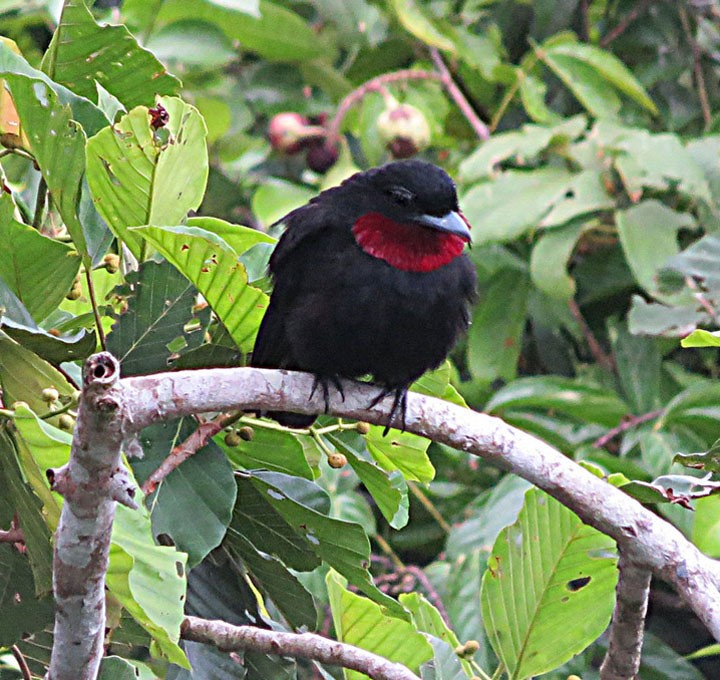Purple-throated Fruitcrow
A species of Purple-throated Fruitcrow Scientific name : Querula purpurata Genus : Purple-throated Fruitcrow
Purple-throated Fruitcrow, A species of Purple-throated Fruitcrow
Botanical name: Querula purpurata
Genus: Purple-throated Fruitcrow
Content
Description General Info
Description
It is a stout medium-sized glossy-black bird. Males have a large purple-red upper throat patch, (similar to the gorget of the hummingbirds), extending to the side of the neck. It has a short wide pointed grayish bill, black eyes, and gray legs. 
Size
25 - 30 cm
Nest Placement
Cavity
Feeding Habits
Purple-throated Fruitcrow primarily indulges in fruit, complemented by large insects and occasionally nestling insects. They forage actively, often utilizing unique adaptations to access food and displaying specific preferences for certain fruits.
Habitat
Purple-throated Fruitcrow is typically found inhabiting the midstory and canopy layers of humid lowland evergreen forests. These environments are dense with vegetation and characterized by a high humidity level, providing the necessary resources for purple-throated Fruitcrow's survival. Their habitat spans over broad tropical regions that feature such forest ecosystems.
Dite type
Frugivorous
General Info
Feeding Habits
Bird food type

Fruit
Behavior
Despite its name, the purple-throated fruitcrow feeds on insects as well as fruit, moving through the forest canopy in small chattering groups. It also nests colonially, with little attempt to hide the nests which are rendered more conspicuous by the noisy group of birds nearby. 
Distribution Area
It is found in Bolivia, Brazil, Colombia, Ecuador, French Guiana, Guyana, Peru, Suriname, and Venezuela; also in southern Central America in Nicaragua, Costa Rica and Panama. Its natural habitat is subtropical or tropical moist lowland forests. The purple-throated fruitcrow ranges across northern South America, with populations west of the Andes cordillera extending into Central America to Nicaragua. It goes from the Guianas and Maranhão state, northeastern Brazil in the east, and throughout the Amazon basin to the Andes foothills in the west; it is only absent in the Amazon Basin in the northeast and north central bordering the Guiana Highlands and southern Venezuela; otherwise the range is contiguous east of the Andes. Its population trend is thought to be downwards but it is a common species with a very wide range and the International Union for Conservation of Nature has assessed its conservation status as being of "least concern". 
Species Status
Not globally threatened.
